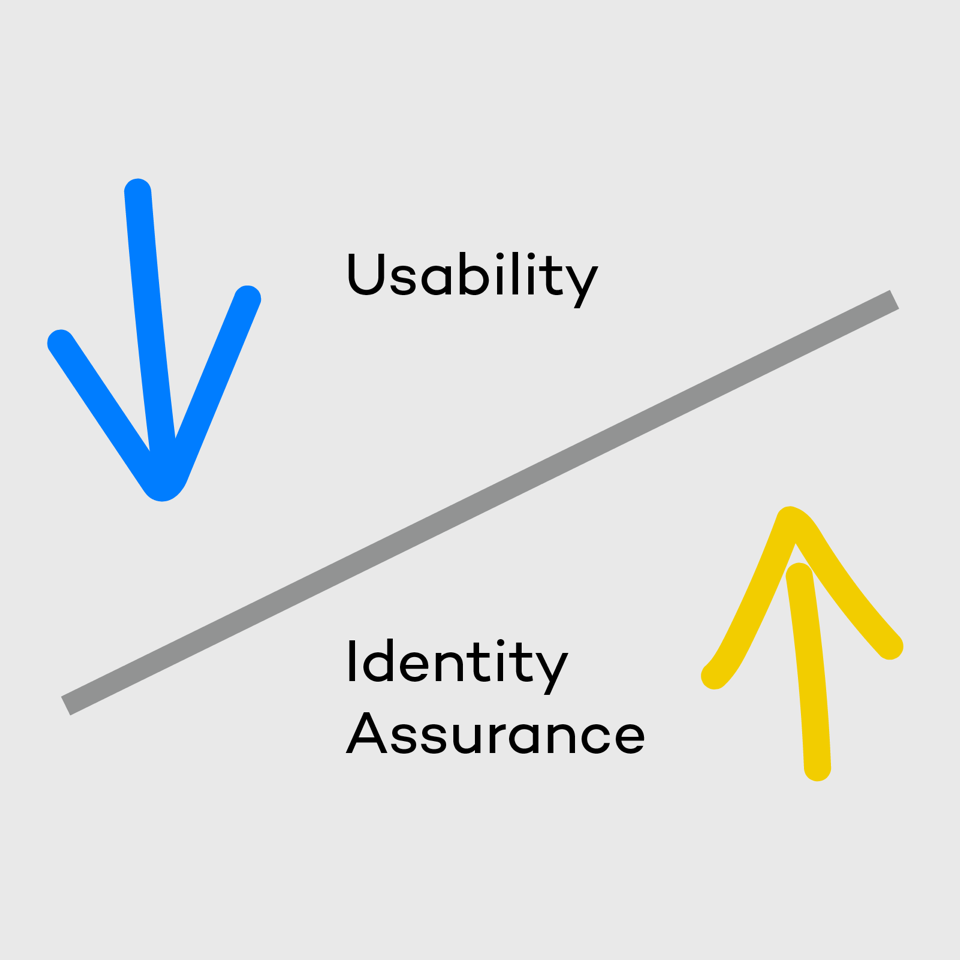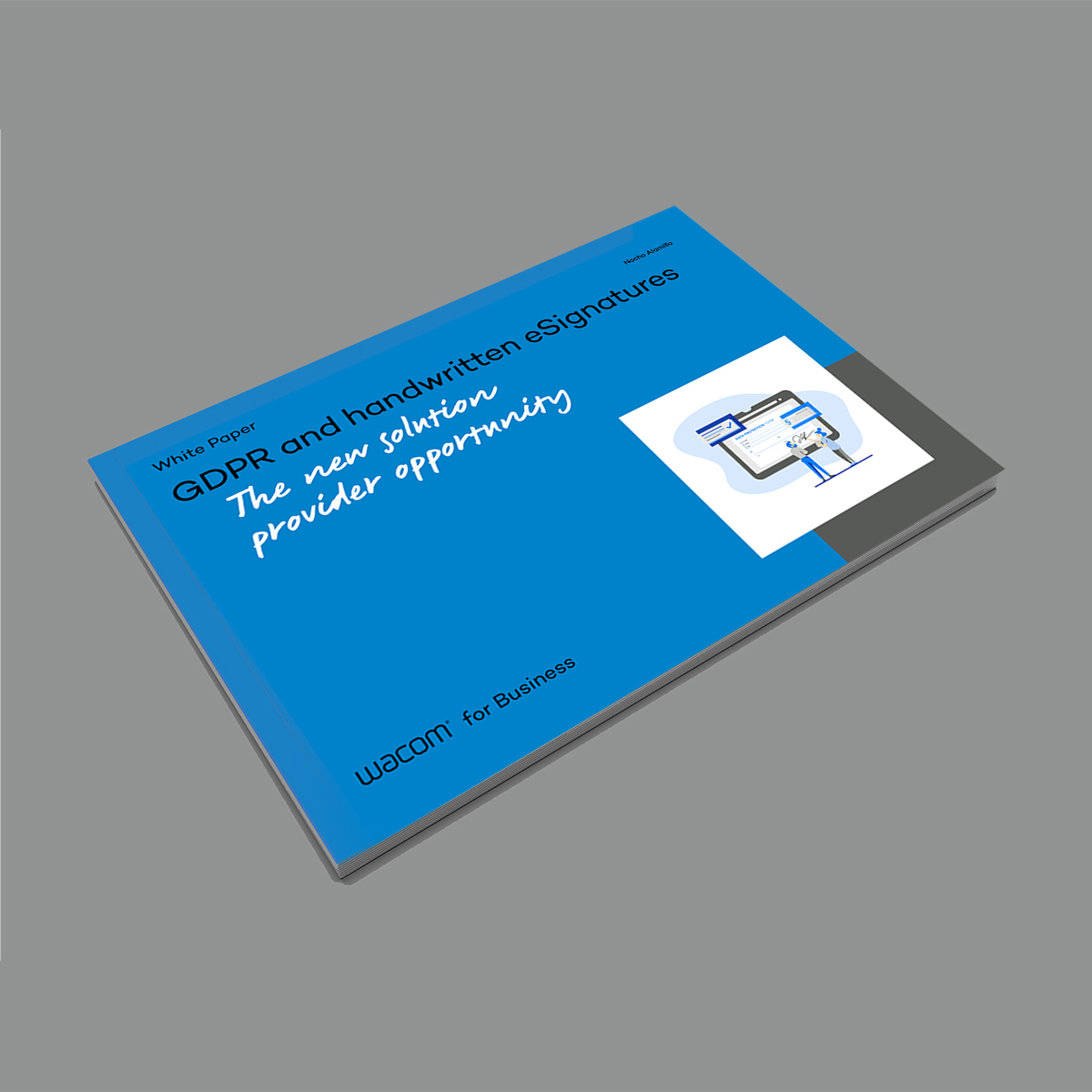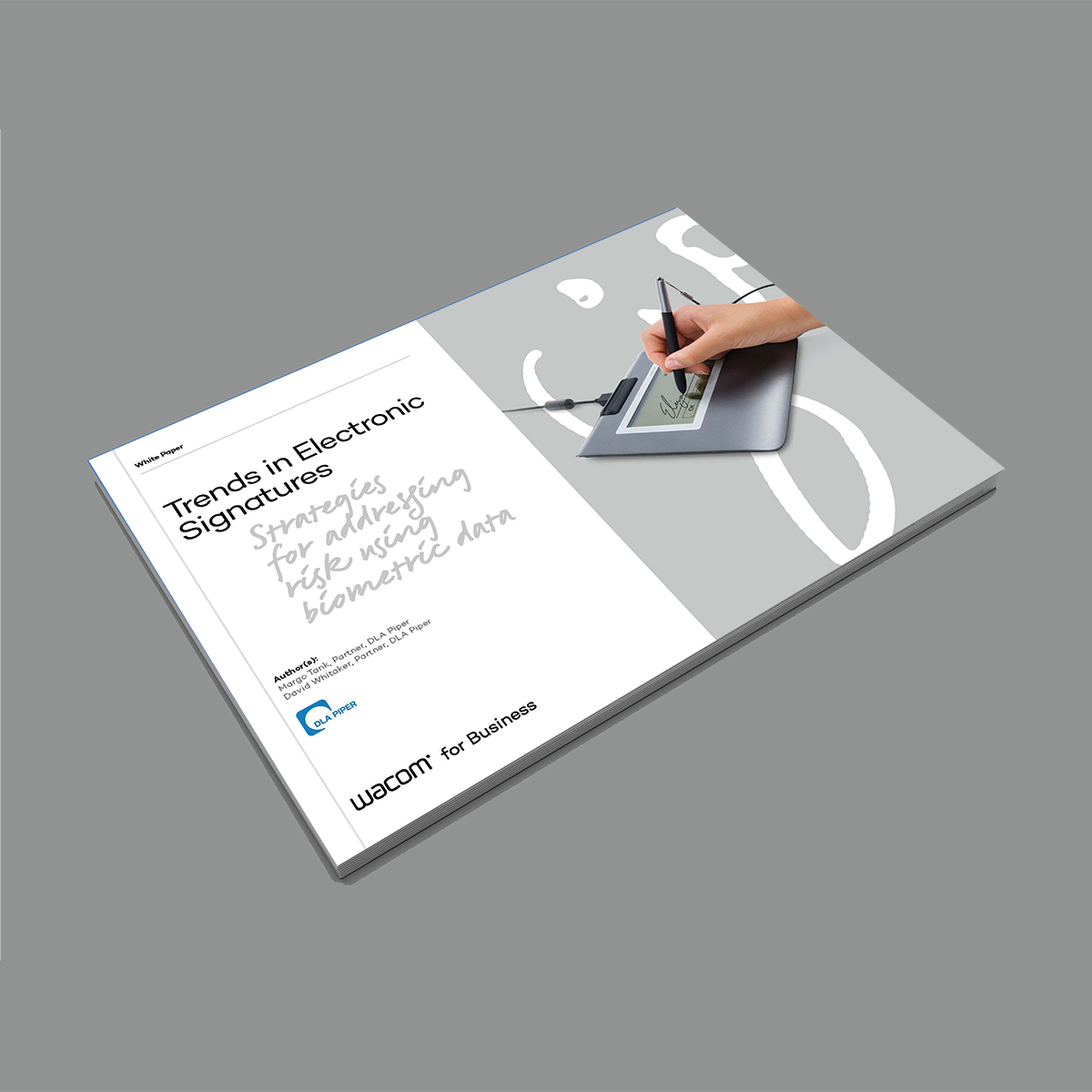
Handwriting Capture
in SaaS eSign Deployments
Cloud-based eSignatures are common – but they have major usability and compliance gaps when it comes to in-person signing.
Download our white paper to learn how digital pen technology and SaaS signing deliver complete electronic signature solutions.
The Past & Future of Handwritten Signatures
Handwritten signatures as a method of identification and consent date back to 3100 BCE and in the subsequent centuries have continued to enjoy a consistent position in law and common practice as a method of identification and consent.
Today, the handwritten signature remains a universally acknowledged way for individuals to approve decisions, provide consent and demonstrate intent.
Moreover, recent enhancement to digital pen and ink technology have resulted in handwritten electronic signatures records that capture biometric artifacts as well as transaction data, generating new ways to capture and validate identity and consent.
These technological developments are creating a unique opportunity for SaaS providers to fill usability and compliance gaps that online signing alone has been unable to address.

Adoption Challenges in Key Industries
-
Opening new markets
-
Authentication
-
User Experience
The cloud-based eSignature model is limited by the types of transactions that can be confidently performed online - due to practical and security concerns.
Healthcare Delivery - The importance of data and privacy compliance within healthcare has limited adoption of email based workflows and focused digital efforts on on-premise solutions where manual data entry of patient information and signature capture remain the norm.
Home Mortgage - Although a driving force behind the original development of electronic signatures, adoption has not kept pace due to the complex ecosystem of relying parties who depend on the authenticity of critical documents and their signers.
Insurance - Adoption has been slow due to internet accessibility and concerns about the potential for misuse of click to sign technology by agents that could invalidate the traditional audit trail associated with SaaS signatures.

Digitally signed documents depend on the widespread acceptance of both attribution which connects the act of signing with the document and authentication which confirms the identity and authority of the person signing to make that agreement.
Cloud based signing solutions have an established audit trail to satisfy attribution requirements using accounts, log-ins, IP addresses and other data points. However, they lack a reliable method of authentication. Where these have been developed in Europe and Latin America they have resulted in limited adoption due to poor usability.
This opens an exciting opportunity for handwritten electronic signatures because according to Moyle, "while electronic signatures must normally be backed up by some form of authentication, handwritten signatures often are a form of authentication."

Signing documents on a computer screen in the presence of the parties has not seen widespread adoption because of user experience concerns. This is because cloud signing solutions "tend to impose authentication and signing structures that do not fit comfortably into a face-to-face exchange."
For example, in a bank branch, the act of signing a document can become more complicated and awkward by requiring signers to use a key pad or mouse to “sign” documents, rather than capturing a handwritten signature.
As an added complication, "because the hardware is shared, signers must be individually authenticated as part of the process, which puts customers in the awkward situation of having to convince the computer they are who they purport to be. When faced with this so-called “swivel signing” ceremony, consumers frequently express frustration."


Why Digital Pens? Why Now?
"Handwriting capture should be part of a digital strategy for SaaS vendors"
Ken Moyle, President, K6 Partners, LLC
Get the White Paper
Cursive in the Cloud
Download Now
While eSignature companies have often distanced themselves from non-cloud alternatives, combining digital pens and SaaS signing can offer a complete electronic signature solution.

Recommended for You
Contact Us
Whatever your needs
Talk to an expert



